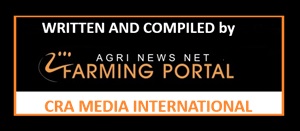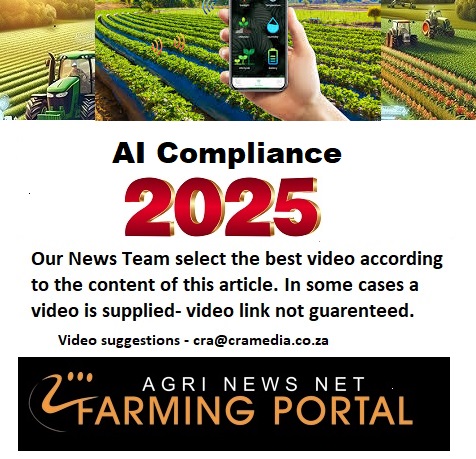South African farmers face a complex and uncertain future shaped by a combination of environmental, political, economic, and social challenges.
While there isn’t a single, unified "vision" articulated by all farmers—given the diversity of the agricultural sector, which spans commercial operations to smallholder subsistence farming—many are actively grappling with these issues and adapting to them. Below, I’ll explore how South African farmers are navigating this unstable and unfriendly environment, drawing from their resilience, innovation, and the broader context of agriculture in the region.
Environmental Challenges and Climate Change
Climate change poses a significant threat to South African agriculture, with rising temperatures, shifting rainfall patterns, and extreme weather events like droughts and floods becoming more frequent. The country is already water-scarce, ranked among the driest globally, and farmers are dealing with what some call a "green drought"—where rainfall is sufficient to green the landscape but inadequate for meaningful crop production. For instance, prolonged droughts in regions like the Western Cape and erratic rainfall elsewhere have forced farmers to rethink their strategies.
Many farmers, particularly those with resources, are adopting climate-smart agriculture (CSA) practices to cope. These include using drought-resistant crop varieties, improving water management through techniques like drip irrigation, and diversifying crops to reduce reliance on single harvests. Smallholder farmers, who make up a significant portion of the sector, often lack access to such technologies due to poverty and poor infrastructure, yet some are turning to indigenous knowledge—like intercropping or natural pest control—to bolster resilience. Despite these efforts, the pace of climate change outstrips widespread adoption, leaving uncertainty about long-term viability.
Political and Social Instability
The political environment adds another layer of complexity. Land reform policies, including the potential for expropriation without compensation, have created unease, particularly among commercial farmers. While intended to address historical inequities, these policies raise fears of economic disruption, especially if productive farmland is redistributed without adequate support for new farmers. Farm attacks—violent crimes targeting rural communities—further erode confidence, with ongoing debates about their frequency and motives complicating the narrative. Though data for 2025 is incomplete as of now, the persistent threat influences farmers’ outlook, with some questioning whether to invest in long-term projects.
This instability is compounded by a perceived lack of consistent leadership. Farmers often express frustration with government support, citing inadequate extension services, slow infrastructure development (e.g., roads and electricity), and wavering agricultural policies. In an unstable world where global leadership also falters—evident in trade uncertainties like potential shifts in the African Growth and Opportunity Act (AGOA)—South African farmers feel increasingly isolated, reliant on their own ingenuity rather than a cohesive national or international framework.
Economic Pressures and Global Context
Economically, farmers face volatile commodity prices, rising input costs (e.g., fertilizers and fuel), and competition in a global market. Climate change exacerbates these pressures by reducing yields, while an unstable world—marked by geopolitical tensions and supply chain disruptions—limits export reliability. For example, South Africa’s agricultural exports, a key economic driver, could be jeopardized if trade agreements falter or if climate impacts elsewhere raise global food prices, creating both risks and opportunities.
Commercial farmers, who occupy most agricultural land, are better positioned to adapt through technology and market access, but smallholders struggle with limited capital and poor market integration. The dual nature of South African agriculture—advanced commercial operations alongside subsistence farming—means visions for the future differ starkly between these groups, with no single strategy emerging as dominant.
Visions and Adaptations
Despite these challenges, South African farmers are not passive. Many exhibit a pragmatic, resilient vision focused on survival and adaptation rather than grand optimism. Commercial farmers are investing in precision agriculture, renewable energy (e.g., solar-powered irrigation), and diversification into high-value crops like fruits and nuts to hedge against instability. Some are also exploring agroecological methods to reduce dependence on chemical inputs, aligning with global sustainability trends.
Smallholder farmers, though resource-constrained, show a vision rooted in community and tradition. Initiatives like agroecology training and participatory guarantee systems (PGS) are gaining traction, supported by NGOs and some private-sector partnerships. These efforts aim to secure local food systems and build resilience against both climate and economic shocks. However, scaling these practices remains a hurdle without stronger government or global support.
The Bigger Picture
In an unstable world without clear leadership, South African farmers’ visions are less about a unified plan and more about pragmatic responses to immediate threats. The lack of a stable environment—whether from climate change, political uncertainty, or global disorder—forces them to operate reactively rather than proactively. While some see a future where technology and innovation secure their livelihoods, others fear a slow decline as challenges mount. The absence of robust data for 2025 limits definitive predictions, but the trajectory suggests a sector under strain, with farmers relying heavily on their own resourcefulness.
In summary, South African farmers don’t have a single "clear vision" due to the diversity of their circumstances and the unpredictability they face. Instead, their approaches reflect a spectrum of resilience, innovation, and uncertainty, shaped by an environment that is undeniably hostile yet not devoid of opportunity. Their future hinges on balancing local adaptation with the hope of eventual stability—both at home and globally.

DISCLAIMER
The views and opinions expressed in this program are those of the writers and do not necessarily reflect the views or positions of any entities they represent. The information contained in this website is for general information purposes only. The information is provided by CRA and while we endeavour to keep the information up to date and correct, we make no representations or warranties of any kind, express or implied, about the completeness, accuracy, reliability, suitability or availability with respect to the website or the information, products, services, or related graphics contained on the website for any purpose. Any reliance you place on such information is therefore strictly at your own risk.
















